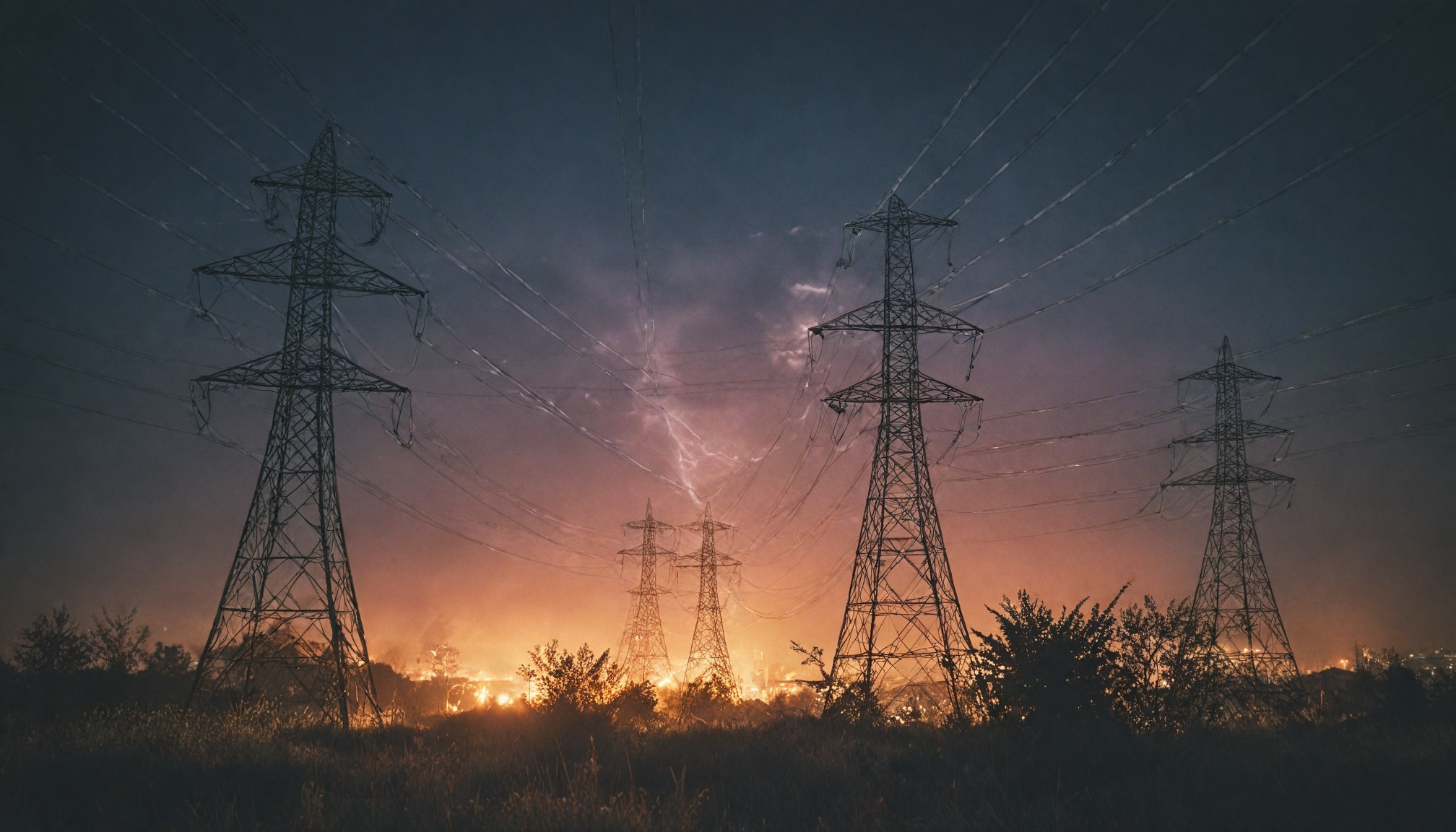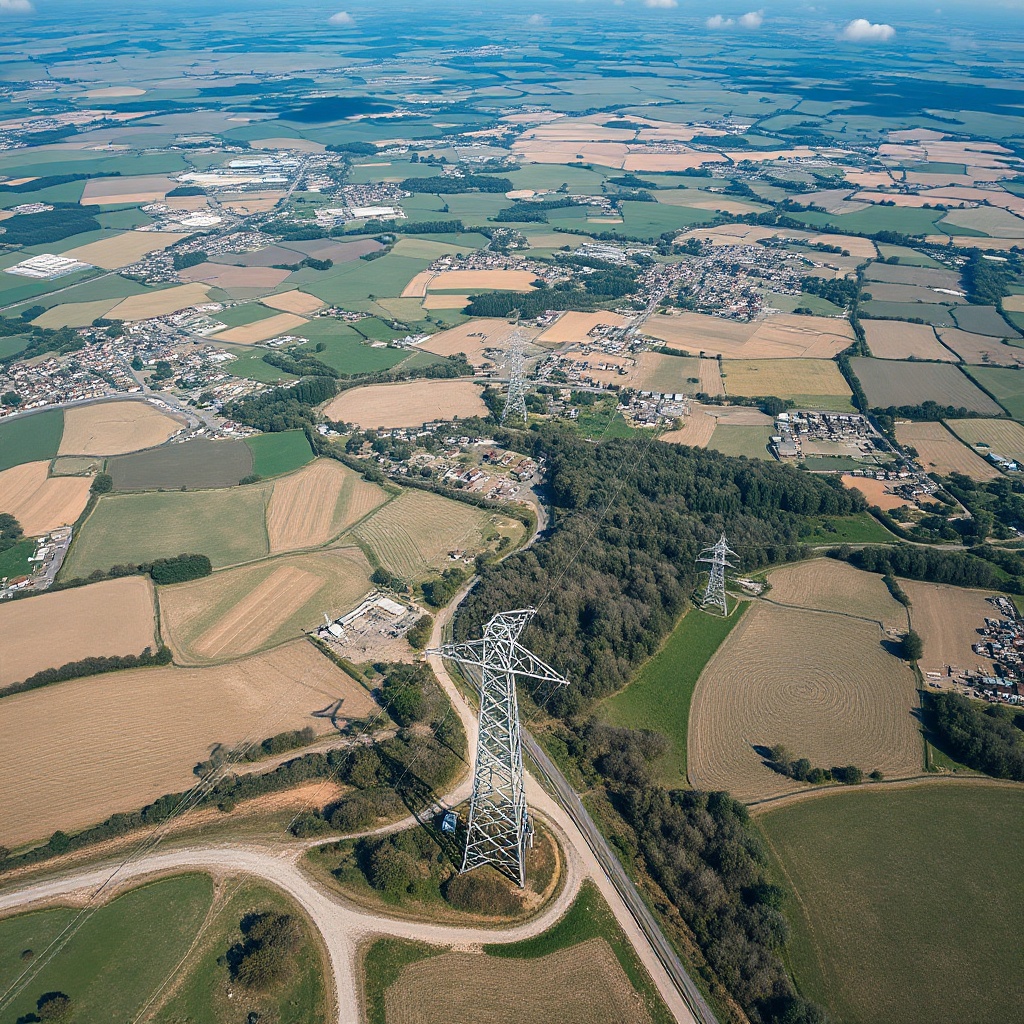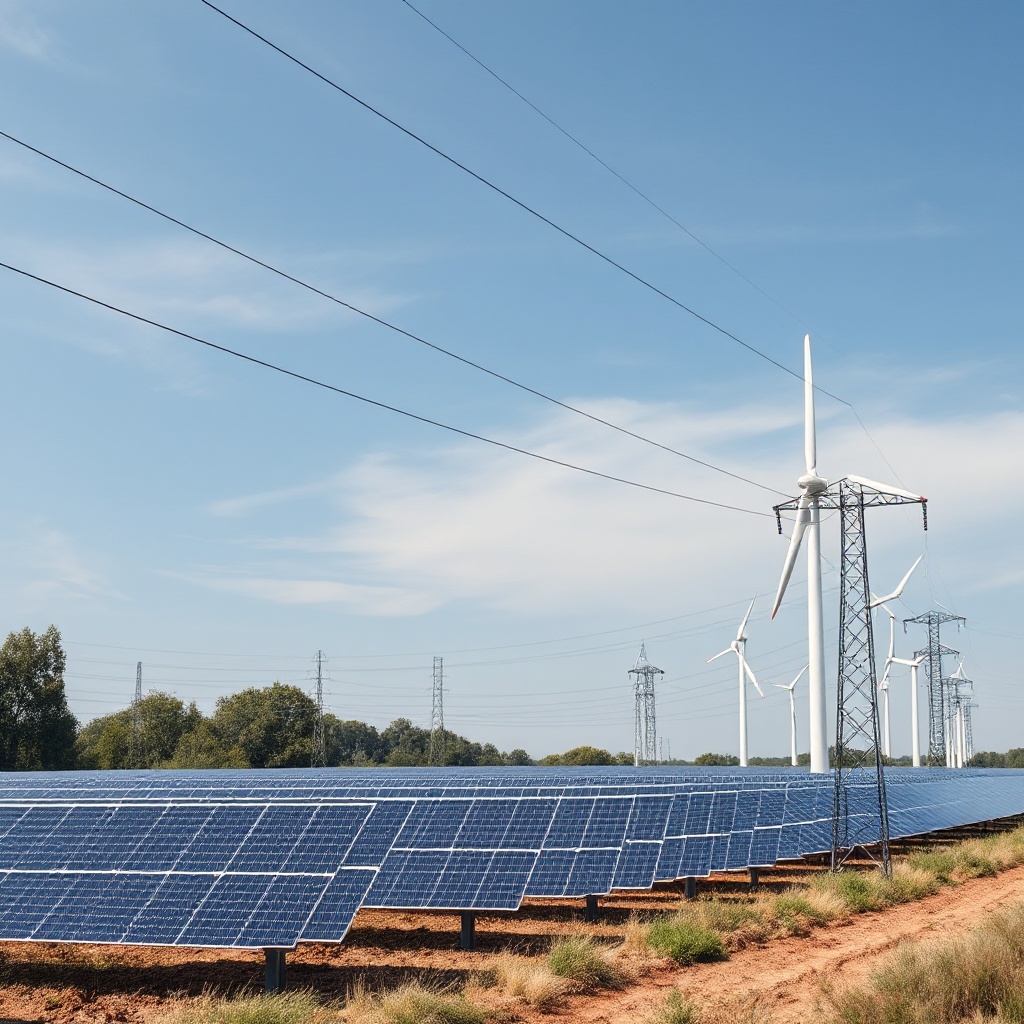
Europe's power grid faces critical vulnerabilities from extreme weather, aging infrastructure, and cyber threats, as revealed by the massive 2025 Iberian blackout affecting 50 million people.

Drivetech Partners
Europe's interconnected electricity grid faces mounting vulnerabilities as extreme weather, aging infrastructure, and cyber threats challenge its stability. The massive Iberian blackout of April 2025 demonstrated both the fragility of the continent's power systems and the urgent need for stronger resilience measures, as the ripple effects disrupted critical services and affected tens of millions of people.
Key Takeaways
The 2025 Iberian blackout was Europe's largest grid failure, affecting 50 million people and causing 15 GW of capacity to drop offline within seconds
Europe's aging grid infrastructure faces multiple converging threats from climate change, renewable integration challenges, and potential cyber attacks
The investment gap is substantial—€584 billion needed this decade for modernization, but current commitments fall significantly short
Backup systems and microgrids proved critical to maintaining essential services during the widespread outage
Future resilience requires a combination of cross-border cooperation, distributed power solutions, and enhanced physical and digital security measures
The Iberian Blackout: Europe's Largest Grid Failure
On April 28, 2025, at 12:30 pm, Europe experienced its most catastrophic power failure in history. The blackout swept across Spain, Portugal, parts of France, and Andorra, affecting over 50 million customers and businesses. Within just five seconds, 15 gigawatts of electricity generating capacity—equivalent to 60% of Spain's power demand—dropped offline, triggering a massive cascade failure.

The timeline reveals the extraordinary speed of the collapse. After the initial event, the grid briefly attempted to self-stabilize before a second event occurred just 1.5 seconds later. The situation deteriorated rapidly when the Catalonia-France interconnector disconnected 3.5 seconds after that, essentially sealing the fate of the Iberian power system. Though most electricity supplies were restored by the following morning, the impact on transportation, telecommunications, ATMs, and emergency services was severe.
Anatomy of Grid Collapse: How Systems Fail
The failure followed a familiar pattern seen in previous blackouts, but at an unprecedented scale for Europe. The initial event resembled a sudden loss of power generation, which triggered protective measures throughout the interconnected system. As the grid attempted to self-stabilize, the second event overwhelmed these protective mechanisms, causing a domino effect of disconnections.
Across the affected regions, critical facilities like hospitals and airports maintained operations thanks to backup power systems and microgrids. The Spanish airport network AENA successfully switched to emergency power, preventing what could have been a far more dangerous situation. Fast communication between grid operators across borders helped isolate the blackout, preventing it from spreading further into the European network's 11.3 million kilometers of infrastructure.

Current Vulnerabilities in Europe's Aging Infrastructure
Europe's electricity grid faces several critical vulnerabilities that contributed to the Iberian crisis. Most fundamentally, the legacy infrastructure wasn't designed for today's decentralized renewable energy generation. This mismatch creates technical challenges that grow more acute with each passing year.
Climate change poses another significant threat to grid integrity. The July 2023 heatwave in Sicily demonstrated this vulnerability when extreme temperatures damaged underground cables, causing localized outages. Without adaptation measures, grid damage from climate-related events is projected to increase sixfold by mid-century.
Additionally, the push for increased electrification—targeted to rise from 21.3% to 32% by 2030—places further strain on existing systems. The integration of renewable energy sources, with solar power generation predicted to increase 20% year-on-year in 2025, creates new technical challenges for grid management and stability.

Network costs also vary dramatically across Europe, from near-zero in Luxembourg to over 30% in Germany and Hungary, creating inconsistent approaches to infrastructure maintenance and security.
The Growing Cyber and Physical Threat Landscape
Beyond technical vulnerabilities, Europe's grid faces increasing external threats, both physical and digital. The Baltic Sea undersea cable sabotage incident highlighted how vulnerable critical infrastructure can be to physical attacks. Similarly, the ongoing conflict in Ukraine since 2022 has demonstrated how power infrastructure becomes a prime target during modern warfare.
The digital threat is equally concerning. A Lloyd's of London scenario analysis determined that a targeted attack on the US Eastern Interconnection could leave 93 million people without power, with comparable risks existing in Europe. As grid systems become smarter and more connected, they create new digital attack vectors that malicious actors can exploit.
Security experts identify several warning indicators for potential attacks, including smaller test-runs, intelligence collection efforts, and deteriorating international relations. While the Iberian blackout was not attributed to a cyber attack, it demonstrated how vulnerable interconnected systems can be to cascading failures—whether triggered accidentally or intentionally.
Investment Gap: Funding Tomorrow's Grid Security
Securing Europe's electricity future requires substantial financial investment. Current grid investments by operators are projected at €72 billion annually until 2030, dropping to €68 billion annually from 2031 to 2050. This adds up to a total planned investment of €1,871 billion between 2024-2050, equivalent to 0.41% of the EU's 2023 GDP.
However, the European Commission estimates a much higher requirement: €584 billion needed this decade alone for grid modernization. This creates a significant funding shortfall that must be addressed to ensure adequate security and reliability.
Power utilities face additional financial strain from rising raw material costs and infrastructure needs. Price volatility driven by fluctuating demand, geopolitical instability, and global commodity prices further complicates long-term planning and investment. Without addressing this investment gap, Europe's grid will remain vulnerable to future disruptions.
Effective Mitigation Strategies from the Iberian Experience
Despite the severity of the Iberian blackout, several effective mitigation strategies demonstrated their value. The ability to switch to manual operation capabilities proved crucial, similar to how Ukraine's ability to switch to manual controls mitigated the effects of their 2016 cyberattack.
Backup systems disconnected from IT networks showed their worth during the crisis. Some facilities benefited from "hardwired" functions built into circuit boards rather than vulnerable software, making them resistant to both digital attacks and cascade failures.
Microgrids and distributed power generation helped critical facilities maintain operations throughout the blackout. Regular exercises of recovery operations and manual controls paid dividends when the real crisis struck. Fast communication between grid operators across borders helped isolate and contain the blackout, preventing an even wider catastrophe.
These successes and failures during the Iberian incident provide valuable lessons for preparedness across the European grid system.
Policy Solutions and Regulatory Framework
In response to the crisis, EU Energy Commissioner Dan Jørgensen unveiled an "affordable energy action plan" with several key initiatives. The plan aims to harmonize network tariffs across Europe before summer 2025, addressing the current inconsistencies in cost distribution.
A comprehensive "grids package" is planned for early 2026, incorporating lessons from the Iberian blackout. This follows the European Court of Auditors report on Europe's power grid published April 1, 2025, which highlighted several vulnerabilities and recommendations.
The regulatory focus is shifting toward resilience rather than just efficiency, recognizing that grid stability must be prioritized alongside cost considerations. Cross-border cooperation has proven essential for continent-wide grid security, and new frameworks are being developed to facilitate this collaboration.
Improved information-sharing systems between utilities and governments represent another key policy initiative, allowing for faster response and better coordination during emergencies.
Building a Resilient European Grid for the Future
Creating a truly resilient European grid requires a multi-faceted approach. Investment in grid modernization and smart grid technologies with enhanced security features forms the foundation of this strategy. Cross-border interconnections must balance vulnerability with resilience benefits, recognizing that connections can both spread and contain failures.
Climate adaptation strategies must protect infrastructure against increasingly extreme weather events. Decentralized power solutions including microgrids provide critical backup for essential infrastructure, creating islands of resilience during widespread outages.
Public-private partnerships are needed to address investment gaps, bringing together government priorities and private sector innovation. Enhanced monitoring systems can provide early detection of both physical and cyber threats, allowing for preemptive action.
Standardized protocols for rapid response to potential cascade failures will enable faster containment of future incidents. Regular stress-testing of grid components and systems against various threat scenarios will identify vulnerabilities before they can be exploited or fail under pressure.
The Iberian blackout serves as both a warning and a learning opportunity. By implementing these measures, Europe can build an electricity grid that delivers not just efficiency, but true resilience in the face of growing challenges.
Sources
European Court of Auditors - Europe's Power Grid Report
Ember Energy - European Electricity Review 2025
Carbon Brief - Q&A: What we do and do not know about the blackout in Spain and Portugal
Microgrid Knowledge - Iberian Grid Blackout: Microgrids and Backup Power Helped Mitigate the Harm





